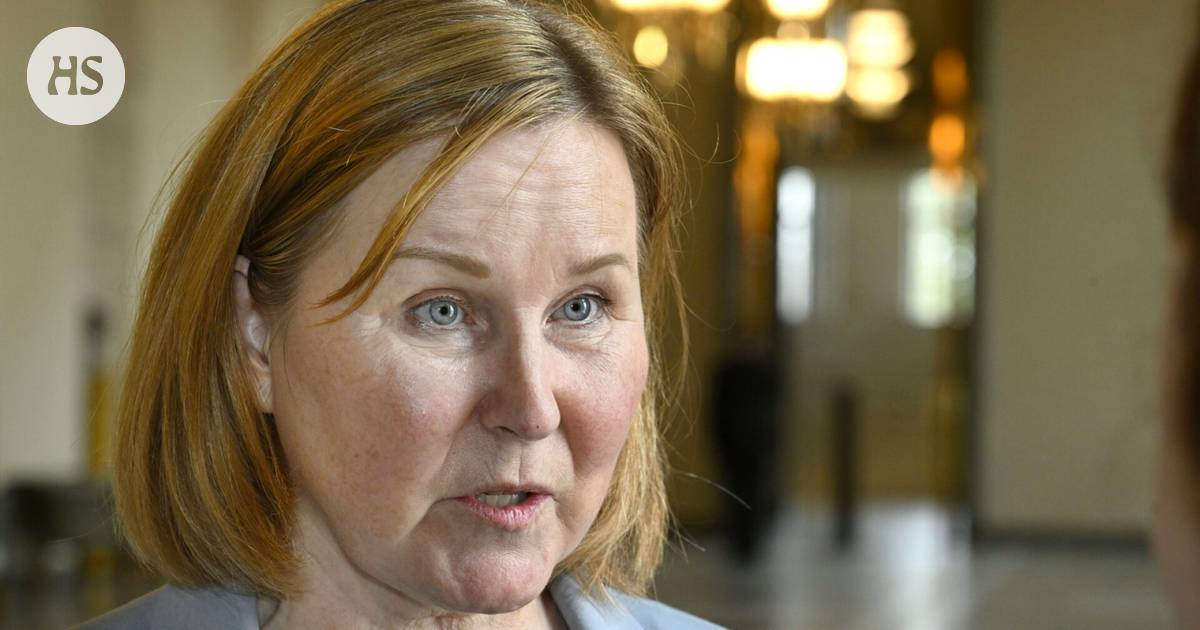The uncertainty that hit the financial markets a week ago has calmed down, but the search for new fires continues.
Panic shook international financial markets last week.
At times it could seem as if another banking crisis was about to begin. However, the threatening storm calmed down – at least for now.
At the center of the unrest was the US Silicon Valley Bank. Its customers started withdrawing large amounts of their deposits already last week, as rumors of the bank’s huge risks materializing intensified.
On Friday, March 10, the United States Deposit Protection Fund took control of the bank. Frightened customers of other banks also started withdrawing their deposits. In the same rush, the Signature bank specializing in virtual currency customers also collapsed.
The key question is what caused the collapse of Silicon Valley Bank? The answer, in all its simplicity, is the betrayal of risk management.
The bank the customers were mainly start-up growth companies whose future is almost always uncertain.
When financing for growth companies has become significantly more expensive due to rising interest rates, they had to withdraw their deposits from the bank. In general, banks make sure that their customer base is not concentrated in a certain industry. This is one part of risk management.
Silicon Valley Bank had invested its customer deposits in bonds, which were recorded on the balance sheet at nominal value. Due to the deposit flight, it had to sell bonds, the value of which had fallen considerably due to the rise in interest rates.
Huge losses arose from the difference between the nominal price and the market price.
“The bank took a significant interest rate risk because the bonds were recorded in the balance sheet at their nominal value. More cautious banks record at least part of the bonds they buy on their balance sheet at the market price and buy interest rate protection for their bond investments, which is admittedly quite expensive,” says the professor of empirical macroeconomics Antti Ripatti from the University of Helsinki.
Last over the weekend, the US Treasury Department, the Deposit Protection Fund and the Federal Reserve had to intervene in the turmoil in the financial markets. The deposits of the failed banks were fully guaranteed so that the depositors would not lose their funds.
The authorities also announced that banks will not be saved, but investors will lose their investments. In principle, taxpayers’ funds are not used in the operation, and the goal is to sell banks that are sinking into bankruptcy.
A beautiful idea on paper, but in Ripati’s opinion not very sensible. The danger is the loss of morale. It means pursuing one’s own interest or taking an unreasonable risk when one is not responsible for it.
“Banks that take care of their risk management pay a lot for their interest rate protection. The authorities’ decisions mean that the deposits of the most profitable banks, which operated at high risk without interest hedging, will be saved. So the message is that it is not worth using funds to hedge the interest rate risk,” says Ripatti.
Another loss of morale, in his opinion, comes from the emergency loans offered by the central bank. Central banks only grant loans against collateral. In addition, the market price of the collateral must be higher than the requested loan.
“In its new emergency loan program, the central bank accepts government bonds as collateral at their nominal value. However, due to rising interest rates, nominal prices are higher than market prices. If the borrower is unable to pay it back, the central bank’s interest rate risk materializes.”
So it’s no wonder that the Ministry of Finance announced that it would guarantee the central bank’s possible losses of up to 25 billion dollars.
“This sends a message to the banks that they should invest in bonds and record them on their balance sheet at nominal value, because when the going gets tough, the central bank can accept them as collateral at their nominal value,” says Ripatti.
Therefore, in the worst case scenario, banks may be tempted to increase their investments in bonds and reduce the financing of companies and households.
On Wednesday the panic caused by the deposit flight actually spread to Europe.
The major Swiss bank Credit Suisse, which has been in financial difficulties for years, came under fire from the market because its largest shareholder announced that he was unwilling to provide additional financing.
The following night, the Swiss National Bank offered Credit Suisse a generous $50 billion in emergency funding. The panic eased.
Saudi National Bank, Credit Suisse’s largest shareholder, thinks the whole panic was artificial. On the other hand, its statement was also very careless. When alarm bells are ringing in the market, almost every word counts.
Finland’s largest banks Nordea and OP estimate that their direct and indirect risks in Credit Suisse are very small.
On Thursday, the US-based First Republic Bank was in trouble due to a budding deposit flight. Competitors arrived to alleviate its plight. The largest banks in the United States deposited $30 billion in First Republic Bank. It was an extraordinary show of trust. Hardly anyone deposits their money in a bank they don’t trust.
Restless week may raise the question of how banks should be stabilized so that they do not cause major disruptions or, in the worst case, crises to the financial markets.
Economists Anat Adamati and Martin Hellwig have been suggesting for years that banks’ capital requirements should be increased. In that case, they would tolerate losses better because they would be more solvent.
The solvency of banks means that they must have enough capital to cover losses if the risks materialize.
There is risk in every loan granted by the bank or in its investment. In fact, all business in any industry, small or large, is always based on risk-taking.
Banks are constantly evaluating their risks and the magnitude of losses that may arise from them. Supervisory authorities, on the other hand, check and possibly question the banks’ estimates. In assessing solvency, the amount of capital in relation to risks is the cornerstone of banking supervision.
Capital simply means funds that the bank has received from its shareholders and other investors, as well as undistributed profits.
If the bank wants to strengthen its capital, it can either issue new shares or decide that the profits will not be used to pay dividends to shareholders, but will be added to the capital.
Banks’ business is based on the fact that they use the funds they receive in the form of equity and debt for, for example, lending and other investments. Together with cash, these loans and investments form the bank’s receivables, i.e. assets.
“Capital requirements are needed to cover possible losses. However, the key thing is that by increasing these requirements, the banks would have more of their capital at stake, in which case they would approach risk-taking more cautiously,” says Ripatti.
Professor of finance at Aalto University Peter Nyberg agrees in principle, but reminds me of the other side of the coin.
“Increasing capital requirements weakens banks’ profitability. Due to lower profitability, they would not be able to grant financing as cheaply as before.”
If you can’t get a loan from the bank on tolerable terms, you have to reduce your investments. This is discouraging to both businesses and households, as debt is a key fuel for the economy.
From the past we know that reliably predicting financial market crises is almost impossible. On the other hand, there are probably as many crisis forecasters as there are lottery players.
If crises could be predicted, they would hardly ever occur. It is also important to understand that economic crises are almost never the same. That’s why comparing them is lame.
Silicon Valley Bank, in particular, has probably suppressed the nagging doubt that is pounding in the heads of many investors.
“One of the big questions is to what extent other banks have recorded their bond investments on their balance sheets at nominal value. Apparently there are many such banks, but we don’t know exactly if they have interest rate protection,” says Ripatti.
Nyberg agrees: the market now spends a lot of time and energy examining banks’ balance sheets.
“The market is looking for the next fires. Even if small flames are visible, it does not necessarily mean a full-scale fire. If it is assumed that nothing surprising new is found in the banks’ balance sheets or affiliations, the worst of the panic may be over.”
One the important moment next week is on wednesday, when the central bank of the united states will publish its monetary policy decision.
The question is whether the world’s most powerful central bank will stick to its hinted rate hikes as cold-headed as the European Central Bank.
A deviation from the chosen line could arouse great uncertainty in the market: is the central bank already aware of the next new fire that the market has not yet discovered.
Chief Economist of the Organization for Economic Co-operation and Development (OECD). Alvaro Pereira stressed on Friday, according to the news agency Bloomberg, that inflation is still the most important economic problem despite the instability of the financial markets.
If the central bank agrees, it will avoid increasing market unrest and continue on its chosen path of interest rate hikes to tame inflation.
#Banks #Banks #panicked #investors #left #bitter #doubt #market #fires









